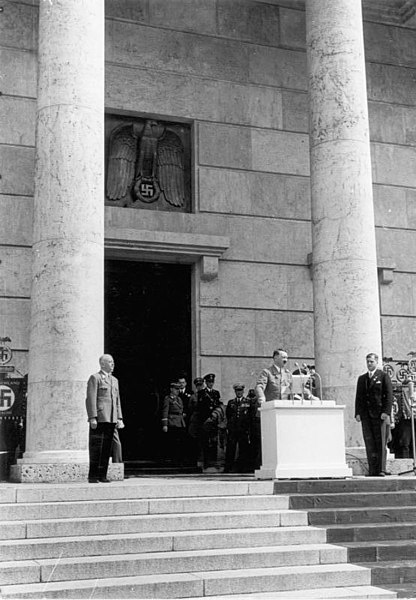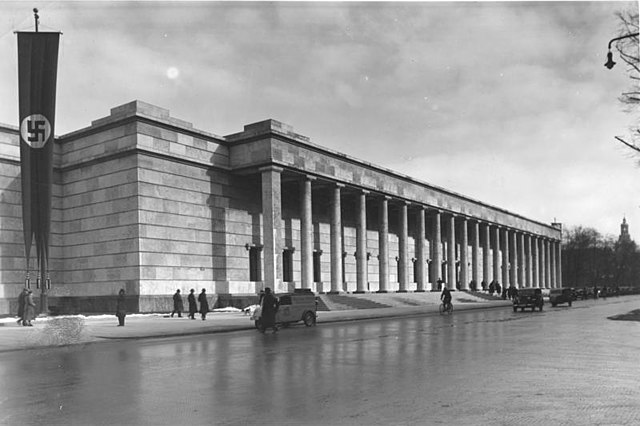Große Deutsche Kunstausstellung
The Große Deutsche Kunstausstellung was held a total of eight times from 1937 to 1944 in the purpose-built Haus der Deutschen Kunst in Munich. It was representative of art under Nazism.
Adolf Hitler during his speech at the opening of the 1st Great German Art Exhibition 1937
caption
The photo series was taken from a grandstand at Odeonsplatz (east side), diagonally opposite the "Führer-Tribüne" (seen here)
Flag bearers rode at the head of a 3 km long procession.
The Nazi regime in Germany actively promoted and censored forms of art between 1933 and 1945. Upon becoming dictator in 1933, Adolf Hitler gave his personal artistic preference the force of law to a degree rarely known before. In the case of Germany, the model was to be classical Greek and Roman art, seen by Hitler as an art whose exterior form embodied an inner racial ideal. It was, furthermore, to be comprehensible to the average man. This art was to be both heroic and romantic. The Nazis viewed the culture of the Weimar period with disgust. Their response stemmed partly from conservative aesthetics and partly from their determination to use culture as propaganda.
Nude statues of the ideal female and male bodies, installed in the streets of Berlin on the occasion of the 1936 Summer Olympics. Berlin won the bid in April 1931, two years before the NSDAP came to power. It was the last time ever that the International Olympic Committee gathered to vote in a city bidding as the host.
Art in Nazi Germany
The House of German Art in Munich
Joseph Goebbels with film director Leni Riefenstahl in 1937








